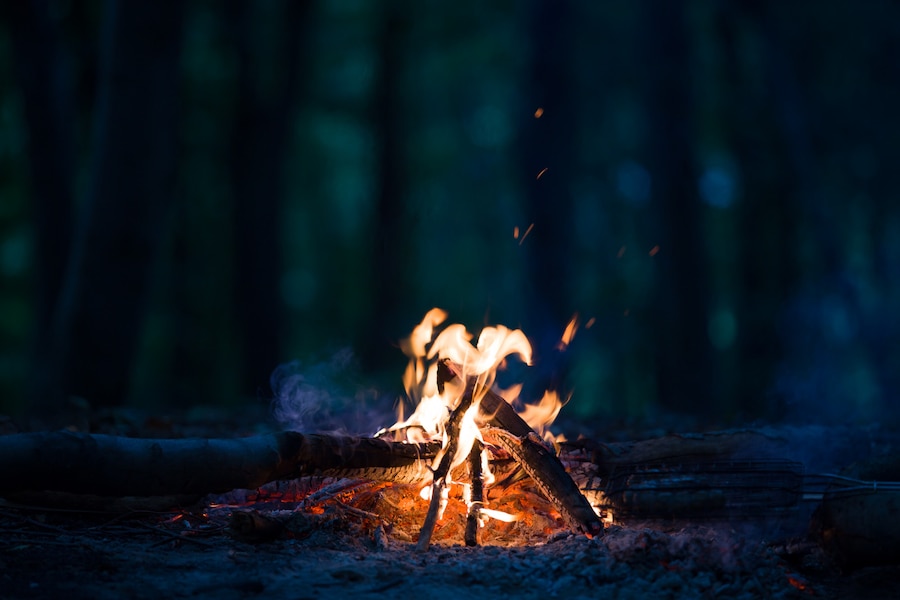When it comes to wood burning, there are so many tips and tricks that can help you create incredible pieces. However, there’s always that learning curve, and it’s all too easy to make mistakes along the way.
In this blog post, we’ll take a look at some of the most common mistakes people make when burning wood. My hope is that by learning from their mistakes you can avoid the same mistakes!
Let’s read Top 10 Wood Burning Mistakes to Avoid:
1. Not allowing enough ventilation
in a greenhouse One of the most important aspects of greenhouse management is ensuring that there is adequate ventilation. Greenhouses can quickly become hot and humid environments, which can lead to problems with plant growth and disease. Adequate ventilation helps to regulate the temperature and humidity levels inside the greenhouse, and also helps to remove any harmful gases that may build up.
Poor ventilation can also lead to condensation on the inside of the greenhouse, which can create an ideal environment for fungal diseases to spread.
2. Not knowing the moisture content of your wood
products If you don’t know the moisture content of your wood products, you could be in for some serious problems down the road. Wood that is too dry will shrink and crack, while wood that is too moist will swell and warp. Not knowing the moisture content of your wood products can lead to all sorts of problems, so it’s important to be aware of it.
The moisture content of wood is determined by its environment. If the air around the wood is very dry, the wood will absorb moisture from the air and become too dry. If the air around the wood is very moist, the wood will release moisture into the air and become too moist. The ideal moisture content for wood is between 6% and 8%. If the moisture content of your wood products is outside of this range, it’s important to take steps to correct it. This is the second most Wood Burning Mistakes to Avoid.

If your wood products are too dry, you can try increasing the humidity in the room where they’re stored. This can be done by using a humidifier, placing a bowl of water in the room, or simply opening a window. If your wood products are too moist, you can try decreasing the humidity in the room where they’re stored. This can be done by using a dehumidifier, opening a window, or increasing ventilation.
It’s also important to make sure that your wood products are stored in a stable environment. Sudden changes in temperature or humidity can cause wood to warp or crack. So, if you’re going to be storing your wood products for any length of time, make sure to do so in a place where the temperature and humidity are stable. Buy online and get wood delivered in Oslo (ved levert i Oslo), Norway.
3. Not opening the damper fully
When lighting a fire When lighting a fire, it is important not to open the damper fully. The damper is a metal plate that covers the opening to the chimney. Opening the damper allows air to flow into the chimney and up through the flue.
This draft helps to draw the fire up and keep it burning. If the damper is opened all the way, too much air will flow into the chimney and the fire will burn too hot. This can damage the chimney and even start a house fire. So, when lighting a fire, be sure to open the damper just a crack.
4. Not seasoning your wood properly
before smoking If you’re smoking meats, it’s important to properly season your wood before use. This will ensure that your food has the best flavor and will prevent the wood from imparting any off-flavors. When seasoning your wood, you’ll want to start by soaking it in water for at least 24 hours.
This will help to leach out any sap or resin that could cause your food to taste bitter. Once your wood has soaked, drain it and then place it in a smoker or BBQ pit. You’ll want to smoke it at a low temperature for several hours, until the wood is dry and beginning to crack. Once your wood is properly seasoned, it’s ready to use for smoking meats.

5. Not using a wood stove door
While a wood stove door is not absolutely necessary, there are several good reasons to use one. First, it helps to keep the fire contained, which makes for a more efficient burn. Second, it protects against sparks and embers flying out of the stove, which could start a fire. Third, it helps to keep the heat in the stove, making it more efficient and reducing the risk of fire. Finally, it helps to keep the smoke from escaping into the room, which can be a health hazard.
6. Not using a wood stove thermometer
If you don’t have a wood stove thermometer, you’re missing out on one of the most important tools for operating a wood stove. A wood stove thermometer helps you to gauge the temperature of the fire, and determine how much wood to add to keep the fire going. Without a thermometer, you’re more likely to over- or under-fuel the fire, and you may not be able to get the stove up to the temperature you need.
A wood stove thermometer is a simple tool, but it can make a big difference in the efficiency of your wood stove. If you’re not using one, we strongly recommend that you get one and start using it to help you get the most out of your wood stove. This is common Wood Burning Mistakes to Avoid.
7. Burning the wrong type of wood
in a fireplace If you burn the wrong type of wood in your fireplace, you could be putting your home at risk. While most people know that you shouldn’t burn trash or treated wood in your fireplace, there are other types of wood that can be dangerous to burn as well. Green wood, for example, can produce a lot of smoke and spark more than dry wood.
This can be a problem if you have a brick fireplace, as the sparks could damage the bricks. Softwoods like pine and cedar can also create a lot of sparks, and the sap in these woods can make your fireplace dirty. It’s best to stick with hardwoods like oak and maple when burning wood in your fireplace.
8. Not using a wood stove fan
There are many reasons why you might not want to use a wood stove fan. Perhaps you are concerned about the environment and the impact of using a fan on the wood stove. Maybe you are worried about the cost of running the fan and the potential for it to break down. Alternatively, you might simply prefer the look and feel of a wood stove without a fan.
Whatever your reasons for not using a wood stove fan, there are a few things you should keep in mind. Firstly, it is important to ensure that your wood stove is properly ventilated. Without a fan, the stove will not circulate air as effectively and could cause the build-up of dangerous levels of carbon monoxide. Secondly, you should be prepared to stoke the fire more often without a fan, as the stove will not be as efficient at burning through the wood.
If you do decide to not use a wood stove fan, make sure to take these precautions into account to ensure your safety and the longevity of your wood stove.
9. Over-firing your wood stove
Over-firing your wood stove is a common mistake that can lead to a number of problems. When you over-fire your stove, you are essentially burning the wood too hot and too fast. This can cause the stove to overheat, which can damage the stove and potentially start a fire. It can also cause the flue to overheat, which can lead to a dangerous build-up of creosote.
Creosote is a by-product of burning wood and is highly combustible. If enough creosote builds up in the flue, it can ignite and cause a chimney fire. Over-firing your wood stove can also be dangerous for you and your family. When the stove gets too hot, it can give off harmful fumes that can be dangerous to breathe. In extreme cases, it can even cause the glass on the stove to shatter.
If you think you may have over-fired your stove, the first thing you should do is open a window to let some of the heat escape. Then, check the flue to see if there is a build-up of creosote. If there is, you will need to have the flue cleaned by a professional.
10. Not cleaning your wood stove regularly
If you have a wood stove, it’s important to clean it regularly to prevent a build-up of soot and creosote. When these materials build up, they can create a fire hazard. The best way to clean your wood stove is to hire a professional chimney sweep. However, you can also do it yourself if you’re careful. Start by removing any ashes from the firebox. Then, use a stiff brush to scrub the inside of the firebox, including the sides and back.
Be sure to wear gloves to protect your hands from soot. Once you’ve scrubbed the firebox, use a vacuum with a hose attachment to clean out any remaining soot. Next, clean the inside of the stovepipe. Use the stiff brush to scrub the sides of the pipe, then vacuum out any soot. Finally, clean the outside of the stove, using a mild soap and water.
Wipe down the entire stove, including the doors, to remove any soot or dirt. If you clean your wood stove regularly, it will last longer and be more efficient. Plus, it will be safer to use. These are all about Wood Burning Mistakes to Avoid.
At Last
To avoid making common wood burning mistakes, be sure to read through this list of tips. By following these simple guidelines, you can ensure that your fires are safe and enjoyable for everyone involved.
Thanks for reading and visiting our website! If you have any questions or comments, let me know in the comments below.




